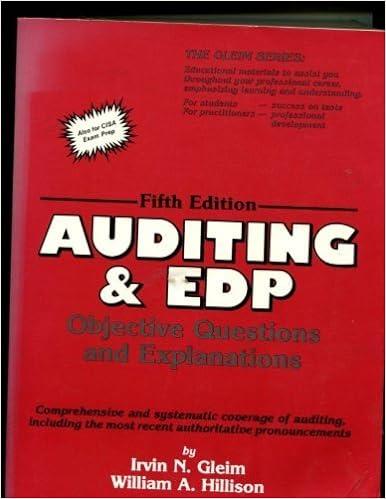Answered step by step
Verified Expert Solution
Question
1 Approved Answer
TRUE/FALSE The process cost system is well suited for use by a computer repair service True False The process cost system is well suited for
TRUE/FALSE
- The process cost system is well suited for use by a computer repair service
- True
- False
- The process cost system is well suited for use by a television manufacturer
- True
- False
- If the principal product of a manufacturing process is homogeneous, a process cost system is more appropriate than a job order cost system
- True
- False
- If the products of a manufacturing process are produced to customer specifications, a process cost system is more appropriate than a job order cost system
- True
- False
- In a process cost system, products costs are accumulated by processing department rather than by job
- True
- False
- Conversion costs include materials, direct labor, and factory overhead
- True
- False
- The direct materials costs and direct labor costs incurred by a production department are referred to as conversion costs.
- True
- False
- The direct labor costs and factory overhead costs incurred by a production department are referred to finish during an accounting period.
- True
- False
- Equivalent units of production are the number of units that could have been manufactured from start to finish during an accounting period.
- True
- False
- Both job order and process cost accounting use equivalent units of production to determine costs.
- True
- False
- If 20,000 units of materials enter production during the first year of operations, 16,000 of the units are finished, and 4,000 are 40% completed, the number of equivalent units of production would be 18,4000.
- True
- False
- If 12,000 units of materials enter production during the first year of operations, 10,000 of the units are finished, and 2,000 are 80% completed, the number of equivalent units of production would be 11,6000.
- True
- False
- If the costs for direct materials, direct labor, and factory overhead were $436,800, $54,600, and $26,600 respectively for 14,000 equivalent units of production, the total conversion cost was $518,000.
- True
- False
- If the costs for direct materials, direct labor, and factory overhead were $75,000, $40,000, and $110,000 respectively for 25,000 equivalent units of production, the total conversion cost per equivalent unit was $9.
- True
- False
- If the costs for direct materials, direct labor, and factory overhead were $436,800, $54,600, and $26,600 respectively for 14,000 equivalent units of production, the total conversion cost per equivalent unit was $5.80.
- True
- False
- If 18,000 units which were 25% completed are in process at November 1, 70,000 units were completed during November, and 15,000 were 40% completed at November 30, the number of equivalent units of production for November was 62,500. (Assume no loss of units in production and that inventories are costed by the first-in, first-out method).
- True
- False
- The cost of production report reports the cost of goods sold.
- True
- False
- The cost production report reports the cost charged to production and the costs allocated to finished goods and work in process.
- True
- False
- The cost of production report summarizes (1) the units for which the department is accountable and the disposition of those units and (2) the costs charged to the department and the allocation to those costs.
- True
- False
- The number of units of product completed during the period plus the number in process at the end of the period is the total units to be accounted for in the cost of production report.
- True
- False
- The number of units of product finished during the period plus the number in process at the beginning of the period is the total units to be accounted for in the cost of production report.
- True
- False
- One of the primary use of a cost production report is to assist management in controlling production costs.
- True
- False
- A department that does nor process materials directly but renders services for the benefit other departments is called a service department.
- True
- False
- the Maintenance and Repair Department, which provides repair services to all departments, is and example of a service department.
- True
- False
- The Assembly Department, which assembles all products, is an example of a service department.
- True
- False
Step by Step Solution
There are 3 Steps involved in it
Step: 1

Get Instant Access to Expert-Tailored Solutions
See step-by-step solutions with expert insights and AI powered tools for academic success
Step: 2

Step: 3

Ace Your Homework with AI
Get the answers you need in no time with our AI-driven, step-by-step assistance
Get Started


